- Home
- Graham Hancock
The Sign and the Seal
The Sign and the Seal Read online
The Sign and the Seal
‘And as concerning the Ark of the Covenant … the work thereof is marvellous. It catcheth the eye by force, and it astonisheth the mind and stupefieth it with wonder. It is a spiritual thing and is full of compassion; it is a heavenly thing and is full of light; it is a thing of freedom and a habitation ofthe Godhead, Whose habitation is in heaven and Whose place of movement is on the earth …’
Kebra Nagast, Ethiopia, thirteenth century
Also by Graham Hancock
Journey through Pakistan
Ethiopia: the Challenge of Hunger
AIDS: the Deadly Epidemic
Lords of Poverty
African Ark: Peoples of the Horn
Copyright © 1992 by Graham Hancock
All rights reserved. No part of this book may be reproduced or transmitted in any form or by any means, electronic or mechanical, including photocopying, recording, or by any information storage and retrieval system, without permission in writing from the publisher.
Published by Crown Publishers, Inc., 201 East 50th Street, New York, New York 10022. Member of the Crown Publishing Group.
CROWN is a trademark of Crown Publishers, Inc.
LIBRARY OF CONGRESS CATALOGING-IN-PUBLICATION DATA
Hancock, Graham.
The sign and the seal: the quest for the lost Ark of the Covenant / Graham Hancock.
p. cm.
1. Ark of the Covenant—Miscellanea. 2. Ethiopia—Description and travel—1981– 3. Hancock, Graham—Journeys—Ethiopia. I. Title.
BM657.A8H36 1992
916.304’7—dc20 91-39041
eISBN: 978-0-307-82904-7
v3.1
Contents
Cover
Other Books by This Author
Title Page
Copyright
Acknowledgements
I Legend
1 Initiation
2 Disenchantment
II Holy Ark and Holy Grail
3 The Grail Cipher
4 A Map to Hidden Treasure
5 White Knights, Dark Continent
6 Resolving Doubts
7 A Secret and Never-Ending Quest
III Labyrinth
8 Into Ethiopia
9 Sacred Lake
10 Ghost in a Maze
11 And David danced before the Ark …
IV A Monstrous Instrument
12 Magic … or Method?
13 Treasures of Darkness
V Where is the Glory?
14 The Glory is departed from Israel
15 Hidden History
16 Door of the Southern Countries
VI The Waste Land
17 Supping with Devils
18 A Treasure Hard to Attain
References
Acknowledgements
First and foremost I want to thank Carol, my partner of ten years, for the precious gifts she gave me. Our marriage did not survive this book. I hope that our friendship will. Thanks, too, to my children: Sean and Leila, Luke and Gabrielle. You’ve paid a heavy price for your dad’s commitment to his quest. I mean to make it up to you. I’m enormously grateful to Donald and Muriel Hancock, to James Macaulay, and to Harold Elborn, for their constant support and interest, for their many readings of the evolving manuscript, and for the wealth of helpful suggestions and advice that they have offered. I would also like to put on record the appreciation that I feel for the invaluable contributions made by my friends Colin Skinner, Caroline Lasko, and Claire Lasko. As well as reading the manuscript at various stages, and commenting on it, they offered me consolation and solidarity in times of trouble and put up patiently with my often exasperating behaviour. In Ethiopia, Professor Richard Pankhurst was both a friend and a colleague to me. I’m honoured to have worked so closely with him. And in England I benefitted greatly from the input of a series of research assistants: Sadie Maine, Alex MacIntyre, Claire Wise, David Mestecky and Julia Hallawell. In addition, my Anglophone editors on both sides of the Atlantic, Tom Weldon at Heinemann, Jim Wade at Crown, John Pearce at Doubleday Canada, as well as my literary agents Bill Hamilton and Sara Fisher, have all shown an interest in this project and a commitment to it that has been above and beyond the call of duty.
Many other people in many different walks of life have also helped along the way. Some would not want to be mentioned at all and others will, I hope, forgive me for not setting out here a list that would be too long for the available space. I cannot close, however, without expressing my very special thanks and gratitude to one person in particular – Santha, who took most of the photographs in this book and who saved my life.
Graham Hancock, March 1992
Part I: Ethiopia, 1983
Legend
Chapter 1
Initiation: 1983
It was growing dark and the air of the Ethiopian highlands was chill when the monk appeared. Stooped and leaning on a prayer stick he shuffled towards me from the doorway of the sanctuary chapel and listened attentively as I was introduced to him. Speaking in Tigrigna, the local language, he then sought clarification through my interpreter about my character and my motives: from which country had I come, what work did I do there, was I a Christian, what was it that I wanted from him?
I answered each of these questions fully, squinting through the gloom as I talked, trying to make out the details of my inquisitor’s face. Milky cataracts veiled his small sunken eyes and deep lines furrowed his black skin. He was bearded and probably toothless – for although his voice was resonant it was also oddly slurred. All I could be sure of, however, was that he was an old man, as old as the century perhaps, that he had his wits about him, and that he did not seem to be seeking information about me out of idle curiosity. Only when he was satisfied with everything that I had said did he condescend to shake hands with me. His grip was dry and delicate as papyrus and from the thick robes that he wore, faint but unmistakable, arose the holy odour of frankincense.
Now that the formalities were over I got straight to the point. Gesturing in the direction of the building that loomed in shadowy outline behind us, I said: ‘I have heard of an Ethiopian tradition that the Ark of the Covenant is kept here … in this chapel. I have also heard that you are the guardian of the Ark. Are these things true?’
‘They are true.’
‘But in other countries nobody believes these stories. Few know about your traditions anyway, but those who do say that they are false.’
‘People may believe what they wish. People may say what they wish. Nevertheless we do possess the sacred Tabot, that is to say the Ark of the Covenant, and I am its guardian …’
‘Let me be clear about this,’ I interjected. ‘Are you referring to the original Ark of the Covenant – the box made of wood and gold in which the Ten Commandments were placed by the prophet Moses?’
‘Yes. God Himself inscribed the ten words of the law upon two tablets of stone. Moses then placed these tablets inside the Ark of the Covenant – which afterwards accompanied the Israelites during their wanderings in the wilderness and their conquest of the Promised Land. It brought them victory wherever they went and made them a great people. At last, when its work was done, King Solomon placed it in the Holy of Holies of the Temple that he had built in Jerusalem. And from there, not long afterwards, it was removed and brought to Ethiopia …’
‘Tell me how this happened,’ I asked. ‘What I know of your traditions is only that the Queen of Sheba is supposed to have been an Ethiopian monarch. The legends I have read say that when she made her famous journey to Jerusalem she was impregnated by King Solomon and bore him a son – a royal prince – who in later years stole the Ark …’
The monk sighed. ‘The name of the prince you are s
peaking of was Menelik – which in our language means “the son of the wise man”. Although he was conceived in Jerusalem he was born in Ethiopia where the Queen of Sheba had returned after discovering that she was carrying Solomon’s child. When he had reached the age of twenty, Menelik himself travelled from Ethiopia to Israel and arrived at his father’s court. There he was instantly recognized and accorded great honour. After a year had passed, however, the elders of the land became jealous of him. They complained that Solomon showed him too much favour and they insisted that he must go back to Ethiopia. This the king accepted on the condition that the first-born sons of all the elders should also be sent to accompany him. Amongst these latter was Azarius, son of Zadok the High Priest of Israel, and it was Azarius, not Menelik, who stole the Ark of the Covenant from its place in the Holy of Holies in the Temple. Indeed the group of young men did not reveal the theft to Menelik until they were far away from Jerusalem. When at last they told him what they had done he understood that they could not have succeeded in so bold a venture unless God had willed it. Therefore he agreed that the Ark should remain with them. And it was thus that it was brought to Ethiopia, to this sacred city … and here it has remained ever since.’
‘And are you telling me that this legend is literally true?’
‘It is not a legend. It is history.’
‘How can you be so sure of that?’
‘Because I am the guardian. I know the nature of the object that has been placed in my care.’
We sat in silence for a few moments while I adjusted my mind to the calm and rational way in which the monk had told me these bizarre and impossible things. Then I asked him how and why he had been appointed to his position. He replied that it was a great honour that he should have been chosen, that he had been nominated with the last words of his predecessor, and that when he himself lay on his death-bed his turn would come to nominate his own successor.
‘What qualities will you look for in that man?’
‘Love of God, purity of heart, cleanliness of mind and body.’
‘Other than you,’ I asked next, ‘is anyone else allowed to see the Ark?’
‘No. I alone may see it.’
‘So does that mean that it is never brought out of the sanctuary chapel?’
The guardian paused for a long while before answering this question. Then, finally, he told me that in the very distant past the relic had been brought out during all the most important church festivals. More recently its use in religious processions had been limited to just one occasion a year. That occasion was the ceremony known as Timkat which took place every January.
‘So if I come back next January will I have a chance of seeing the Ark?’
The monk looked at me in a way that I found strangely disconcerting and then said: ‘You must know that there is turmoil and civil war in the land … Our government is evil, the people oppose it, and the fighting comes closer every day. In such circumstances it is unlikely that the true Ark will be used again in the ceremonies. We cannot risk the possibility that any harm might come to something so precious … Besides, even in time of peace you would not be able to see it. It is my responsibility to wrap it entirely in thick cloths before it is carried in the processions …’
‘Why do you wrap it?’
‘To protect the laity from it.’
I remember asking my interpreter to clarify the translation of this last puzzling remark: had the monk really meant ‘to protect the laity from it’? Or had he meant ‘to protect it from the laity’?
It was some time before I got my answer. ‘To protect the laity from it. The Ark is powerful.’
A great mystery of the Bible
In early Old Testament times the Ark of the Covenant was worshipped by the Israelites as the embodiment of God Himself, as the sign and the seal of His presence on earth, as the stronghold of His power, and as the instrument of His ineffable will.1 Built to contain the tablets of stone upon which the Ten Commandments had been written, it was a wooden chest measuring three feet nine inches long by two feet three inches high and wide.2 It was lined inside and out with pure gold and was surmounted by two winged figures of cherubim that faced each other across its heavy golden lid.3
Biblical and other archaic sources speak of the Ark blazing with fire and light, inflicting cancerous tumours and severe burns, levelling mountains, stopping rivers, blasting whole armies and laying waste cities. The same sources also leave no doubt that it was, for a very long time, the cornerstone of the evolving Jewish faith: indeed when King Solomon built the First Temple in Jerusalem his sole motive was to create ‘an house of rest for the Ark of the Covenant of the Lord’.4 At some unknown date between the tenth and the sixth century BC, however, this uniquely precious and puissant object vanished from its place in the Holy of Holies of that Temple, vanished without song or lamentation in the Scriptures – almost as though it had never existed at all. The evidence suggests that it was already long gone when the armies of Nebuchadnezzar burned Jerusalem in 587 BC. Certainly it was not in the Second Temple which was built over the ruins of the First after the Jews had returned from their exile in Babylon in 538 BC. Neither does it seem to have been taken as booty by the Babylonians.
Writing in 1987, Richard Elliott Friedman, Professor of Hebrew and Comparative Religion at the University of California, expressed a view shared by many scholars when he described the disappearance of the sacred relic as ‘one of the great mysteries of the Bible’:
There is no report that the Ark was carried away or destroyed or hidden. There is not even any comment such as ‘And then the Ark disappeared and we do not know what happened to it’ or ‘And no one knows where it is to this day’. The most important object in the world, in the biblical view, simply ceases to be in the story.’5
Indeed so. A close reading of the Old Testament reveals more than two hundred separate references to the Ark of the Covenant up until the time of Solomon (970–931 BC); after the reign of that wise and splendid king it is almost never mentioned again.6 And this, surely, is the central problem, the real historical enigma: not, human nature being what it is, that an immensely valuable golden chest should go missing, but – given its supreme religious significance – that it should go missing amidst such a deafening, improbable silence. Like a black hole in space, or a negative photographic image, it is identifiable in the later books of the Old Testament only by what it is not – it is, in short, conspicuous only by its absence.
From this it seems reasonable to suggest that some sort of cover-up may have taken place – a cover-up devised by priests and scribes to ensure that the whereabouts of the sacred relic would remain forever a secret. If so then it is a secret that many have tried to penetrate – a secret that has inspired several treasure-hunting expeditions (all of which have failed) and also one enormously successful Hollywood fantasy, Raiders of the Lost Ark, which was first released in the USA and Europe in 1981 with Harrison Ford in the starring role as Indiana Jones.
I was living in Kenya at the time and had no opportunity to see the film until it finally arrived in Nairobi’s cinemas early in 1983. I enjoyed the combination of action, adventure and archaeology and I remember thinking what a sensation it would be if someone were really to find the Ark. Then, only a few months later, I made an extended visit to Ethiopia during which I travelled to the north-west of the war-torn province of Tigray. It was there, in Axum – the so-called ‘sacred city of the Ethiopians’7 – that I had my encounter with the guardian monk reported earlier in this chapter.
1983: a country at war
On 28 May 1991, after years of brutal fighting, the government of Ethiopia was finally toppled by a formidable coalition of rebel forces in which the Tigray People’s Liberation Front had played a leading role. When I went to Axum in 1983, however, the TPLF was still a relatively small guerilla force and the sacred city, although besieged, was still in government hands. Other than myself, no foreigners had been there since 1974 when a team of British archaeo
logists had been driven out by the revolution that had overthrown Emperor Haile Selassie and that had installed one of Africa’s bloodiest dictators, Lieutenant-Colonel Mengistu Haile Mariam, as Head of State.
Lamentably the free access that I was granted to Axum did not result from any special enterprise or initiative of my own but from the fact that I was working for Mengistu. As a result of a business deal that I was later bitterly to regret I was engaged in 1983 in the production of a coffee-table book about Ethiopia – a book that Mengistu’s government had commissioned in order to proclaim the underlying unity in the country’s cultural diversity, and to emphasize the ancient historical integrity of the political boundaries that the rebels were trying so hard to redraw. It had been agreed before I began work that there would be no overt promotion of the government’s cause, and it was written into my contract that no particular individuals (Mengistu included) would be praised or vilified. Nevertheless I was under no illusions about how the project was viewed by senior figures in the regime: they would not have footed the bills, or permitted me to visit historic sites forbidden to others, if they did not think that what I was doing would be helpful to them.
Even so it was by no means easy for me to get to Axum. Intense rebel activity along the main roads and around the sacred city itself meant that driving was completely out of the question. The only option, therefore, was to fly in. To this end – together with my wife and researcher Carol and my photographer Duncan Willetts – I travelled first to Asmara (the regional capital of Eritrea) where I hoped that it might be possible for us to hitch a ride over the battle lines on one of the many military aircraft stationed there.
Standing on a high and fertile plateau overlooking the fearsome deserts of the Eritrean coastal strip, Asmara is a most attractive place with a markedly Latin character – not surprising since it was first occupied by Italian forces in 1889 and remained an Italian stronghold until the decolonization of Eritrea (and its annexation by the Ethiopian state) in the 1950s.8 Everywhere we looked we saw gardens erupting with the colour of bougainvillaea, flamboyants and jacaranda, while the warm, sunny air that surrounded us had an unmistakable Mediterranean bouquet. There was also another element that was hard to miss: the presence of large numbers of Soviet and Cuban combat ‘advisers’ wearing camouflage fatigues and carrying Kalashnikov assault rifles as they swaggered up and down the fragrant pastel-shaded boulevards.

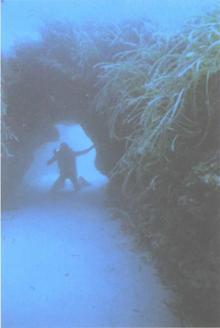 Underworld: The Mysterious Origins of Civilization
Underworld: The Mysterious Origins of Civilization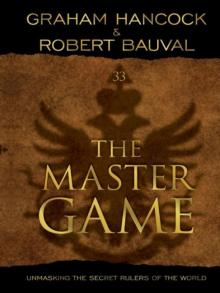 The Master Game: Unmasking the Secret Rulers of the World
The Master Game: Unmasking the Secret Rulers of the World America Before
America Before Entangled
Entangled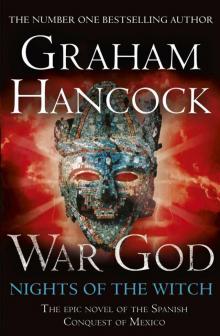 War God: Nights of the Witch
War God: Nights of the Witch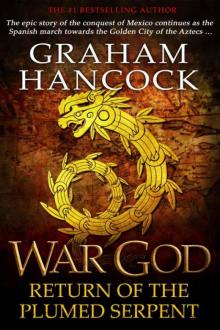 War God: Return of the Plumed Serpent
War God: Return of the Plumed Serpent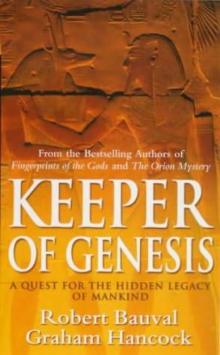 The Message of the Sphinx AKA Keeper of Genesis
The Message of the Sphinx AKA Keeper of Genesis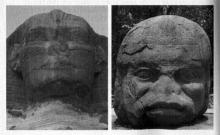 Fingerprints of the Gods
Fingerprints of the Gods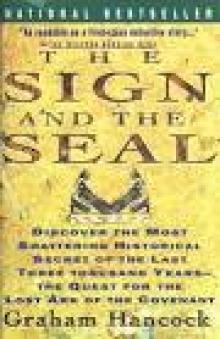 The Sign and the Seal
The Sign and the Seal The Mars Mystery: The Secret Connection Between Earth and the Red Planet
The Mars Mystery: The Secret Connection Between Earth and the Red Planet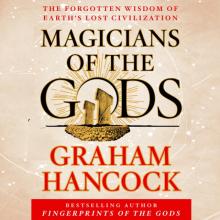 Magicians of the Gods: The Forgotten Wisdom of Earth's Lost Civilization
Magicians of the Gods: The Forgotten Wisdom of Earth's Lost Civilization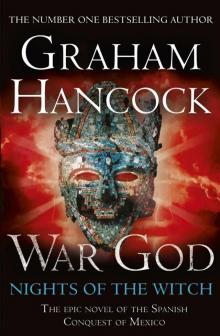 War God
War God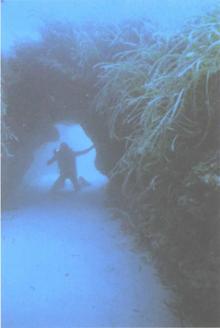 Underworld
Underworld The Mars Mystery
The Mars Mystery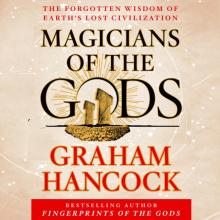 Magicians of the Gods
Magicians of the Gods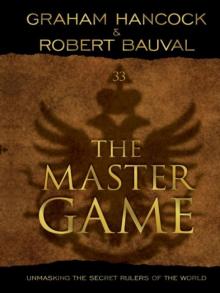 The Master Game
The Master Game